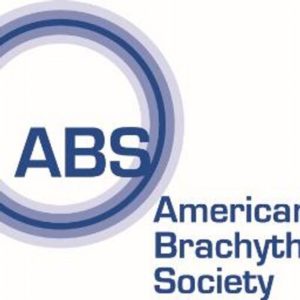Eye-sparing plaque brachytherapy can now help more patients with uveal melanoma versus enucleation.
The American Brachytherapy Society (ABS) reports that more patients with uveal melanoma will be able to spare their eye by widening the criteria for plaque brachytherapy.
It had been 10 years since guidelines for the treatment of uveal melanoma were published — but now, updated ABS consensus guidelines have been newly established by the ABS-Ophthalmic Oncology Task Force. Using clinical experience with eye cancer and knowledge of the literature, 47 radiation oncologists, medical physicists, and ophthalmic oncologists from 10 countries were able to produce these collaborative guidelines.
To view these published guidelines via PubMed, click here. For your convenience, we have here a summary of the updates ABS guidelines for plaque brachytherapy treatment:
- Tumor classifications were updated to reflect the AJCC T-staging system.
- Utilizing this system, T1, T2, T3, and T4a-d uveal melanoma patients can be treated, after counseling about likely vision, eye retention, and local control outcomes.
- Small melanomas can be treated at the eye cancer specialist’s discretion (not only for evidence of growth)
- Uveal melanomas near, touching (juxtapapillary) and surrounding (circumpapillary) the optic nerve can be treated with radiation therapy; however patients with tumors in this location as well as subfoveal tumors and those with exudative retinal detachments may have poorer vision outcomes and local control.
- Extrascleral tumor extension does not exclude patients from plaque brachytherapy, unless they are classified as T4e (extraocular exrtension is >5mm in diameter).
- Clinical diagnosis of uveal melanoma is still considered adequate for treatment (no change from 2003 guidelines). Histopathologic verification is not required.
The ABS recommends, additionally, that plaque procedures be performed in specialized centers with expertise in ophthalmic brachytherapy. Their report discusses guidelines for plaque and radionuclide selection (including dose prescription), and follow-up after brachytherapy.
Previously, some patients may have felt like enucleation was their only possible treatment, and undergoing a surgery to remove the eye is no easy decision. These new ABS guidelines will help to expand the number of patients eligible for plaque brachytherapy and reduce the number of patients requiring enucleation. With these results, some patients who fit these new criteria have been shown another avenue for hope. And for one’s journey through eye cancer treatment, hope is exceptionally valuable.
Come back next week at eyecancer.com for more information regarding enucleation vs. plaque brachytherapy!










